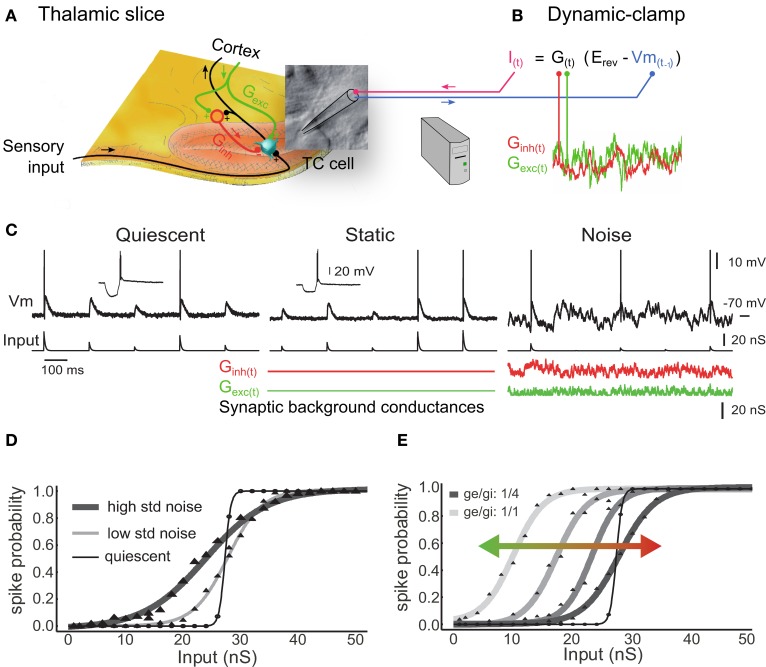Figure 1.
Synaptic noise tunes the transfer function of thalamocortical cells recorded in vitro. (A) Illustration of a thalamic slice where a TC cell is recorded using a patch pipette. (B) The dynamic-clamp technique is used to stimulate TC cells with artificial sensory inputs and synaptic conductances, thus mimicking the impact of the corticothalamic feedback during sensory integration. (C) Voltage during injection of discrete retinal-like input conductance (quiescent) and with additional inhibitory plus excitatory background conductance that were either non-fluctuating (static) or stochastically fluctuating (noise). Combined inhibitory and excitatory conductances reduced the input resistance to ~50% (insets in quiescent and static). (D) Probabilities of input conductance strengths to evoke at least one spike within a 20 ms delay, fitted to sigmoid functions. In the noise condition (but not static; not shown, see in Wolfart et al., 2005), a multiplicative gain is induced, corresponding to a slope change of the response curve, and characterized by an increased sensitivity to small inputs and a decreased sensitivity to large inputs. Decreasing the variance of noise conductance values from high voltage variance noise (high std noise; 3.65 mV; n = 24) to low noise (low std noise; 2.6 mV; n = 5) changes the input-output slope and the sensitivity to small inputs. (E) Changing the ratio of excitatory/inhibitory conductances (1/1, 1/2, 1/3, and 1/4) induces an additive gain that shifts the dynamic input sensitivity range of the transfer function toward smaller inputs (leftward green shift) for higher ratios and toward larger inputs for lower ratios (rightward red shift). Modified from Wolfart et al. (2005).

